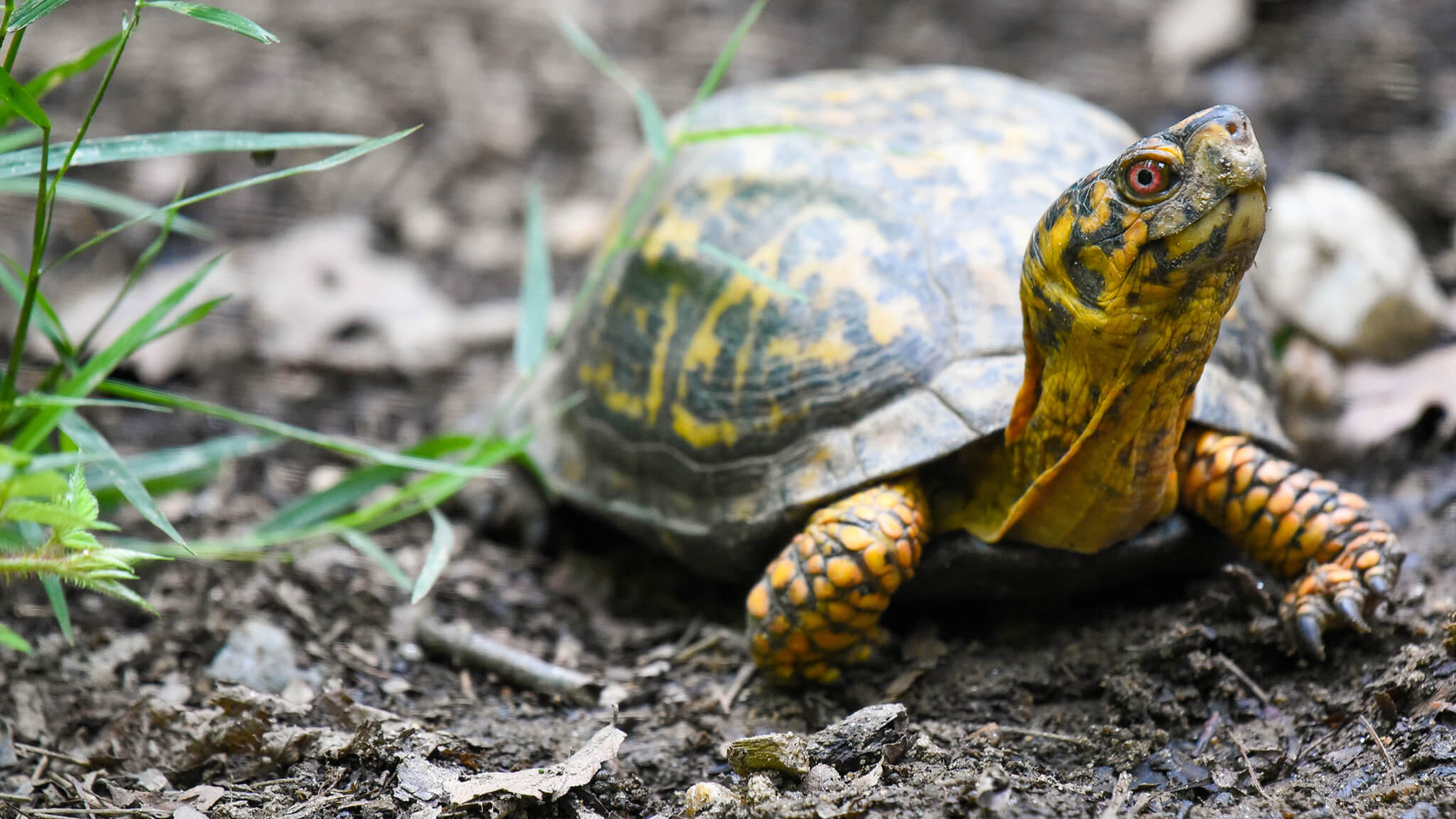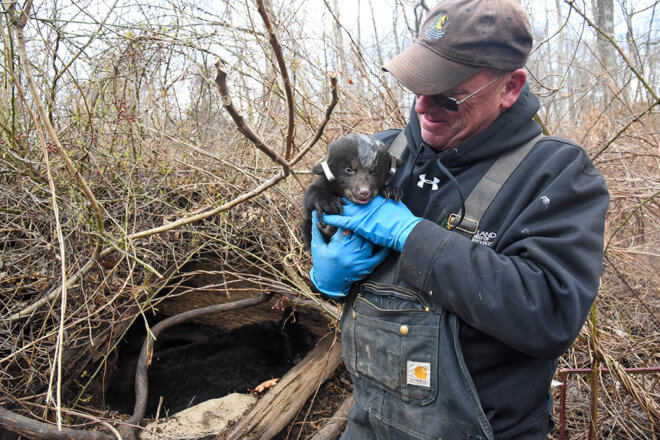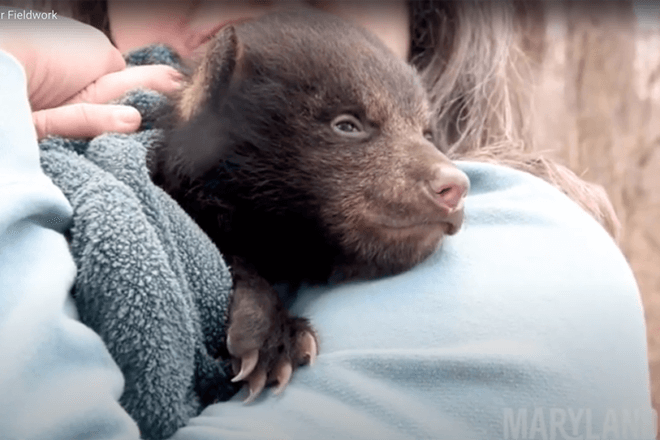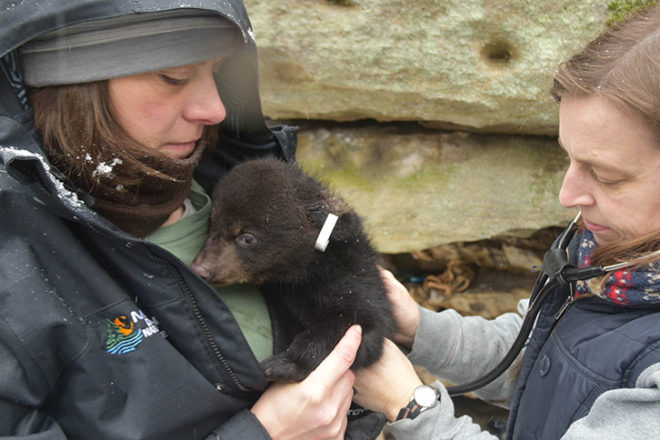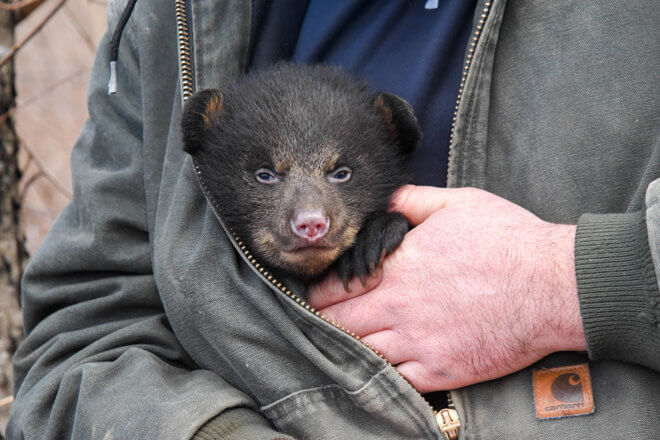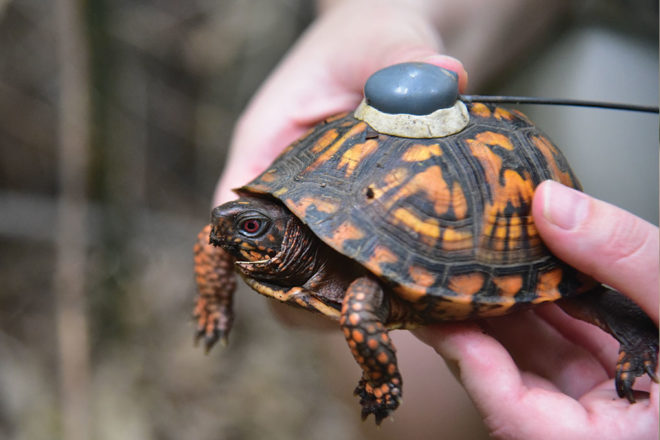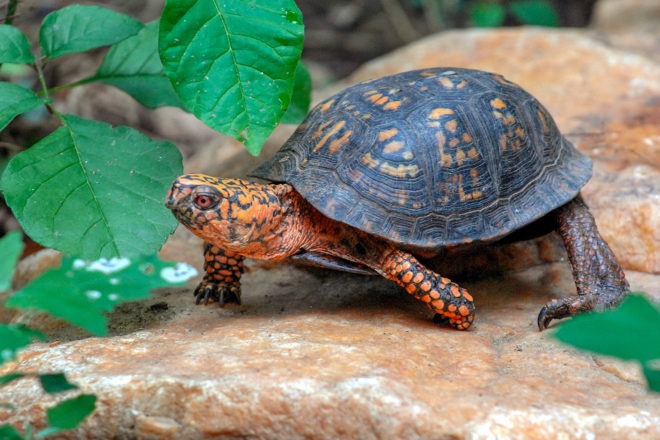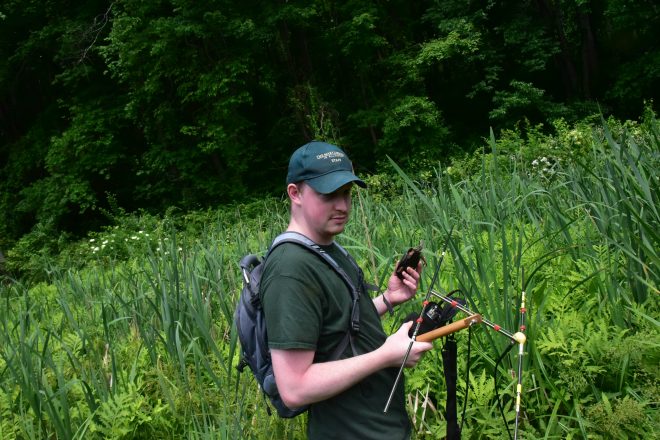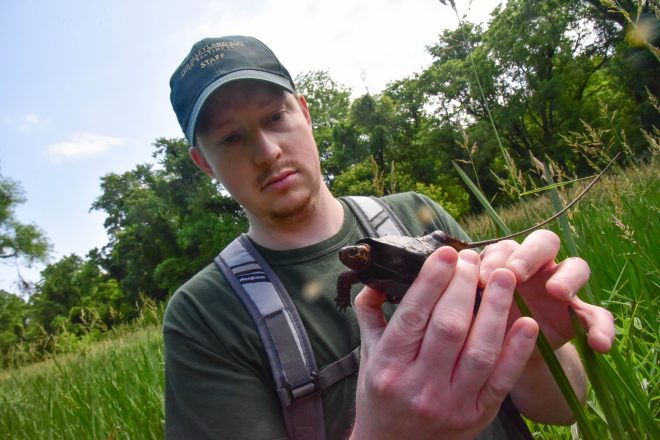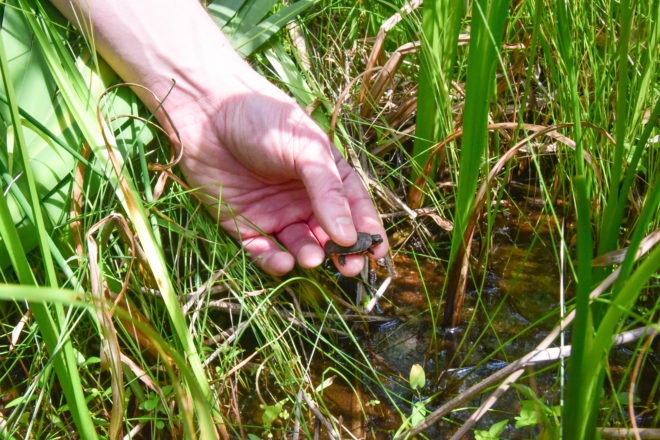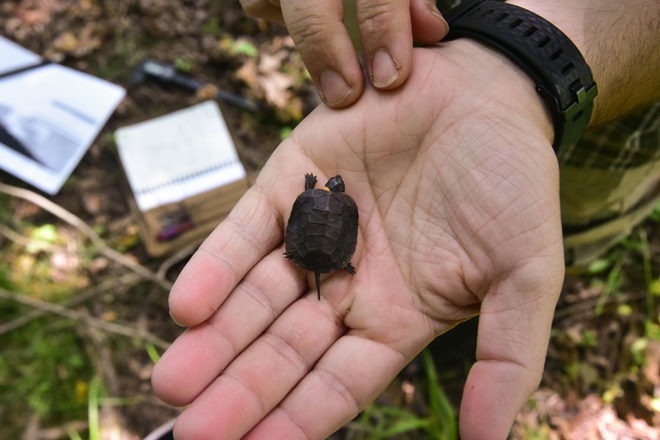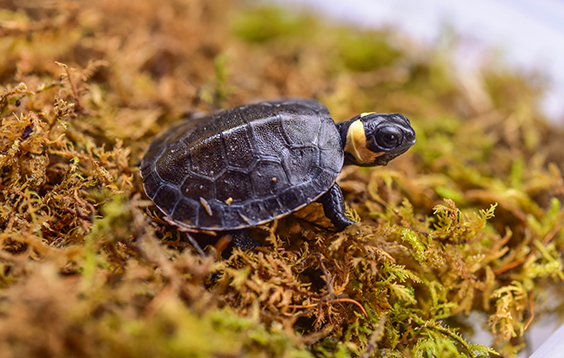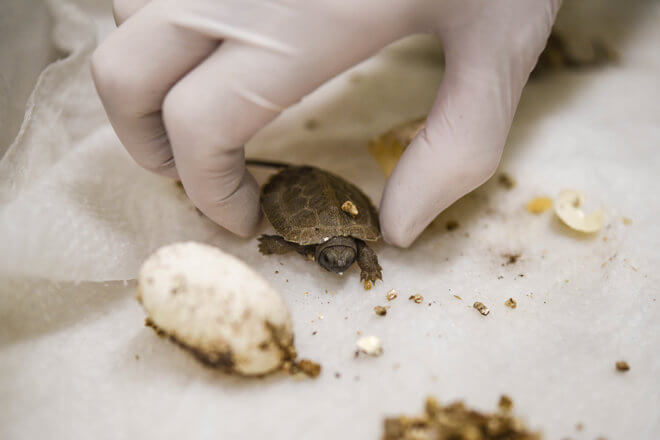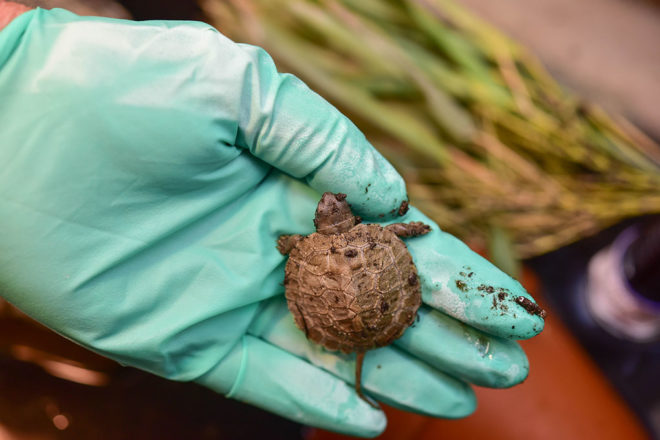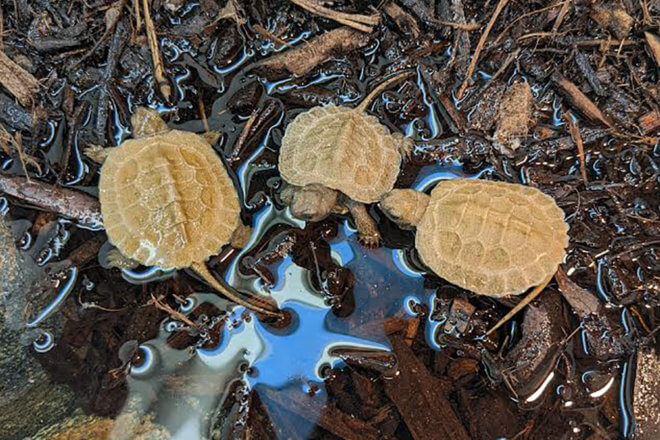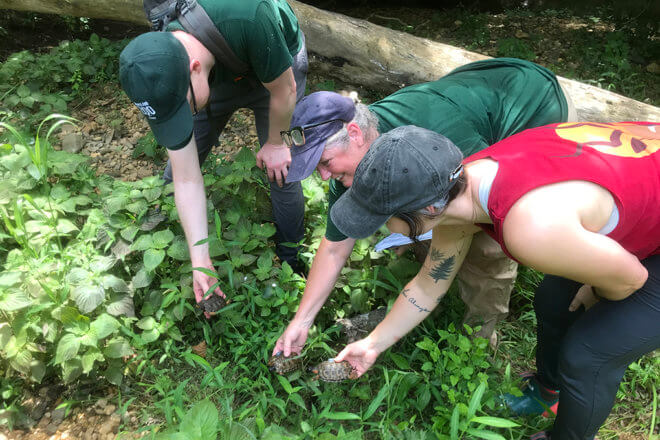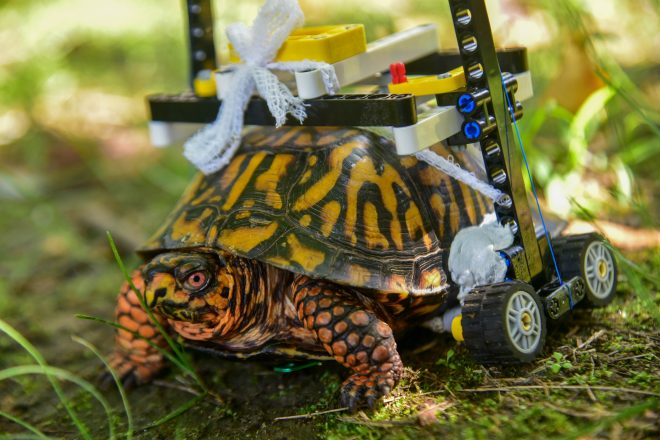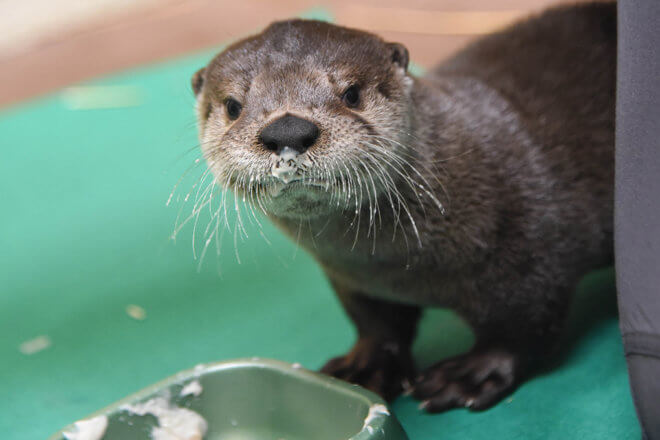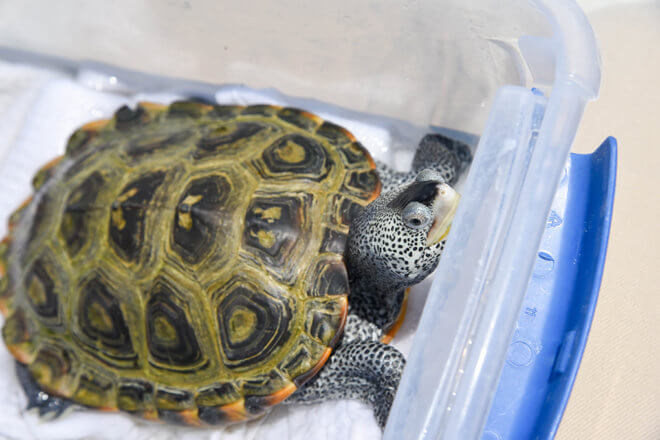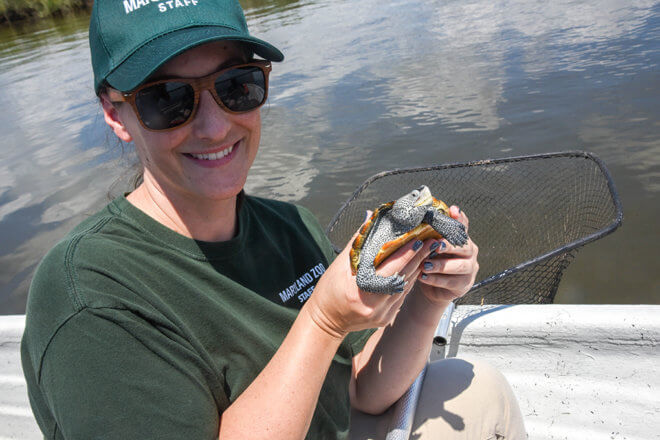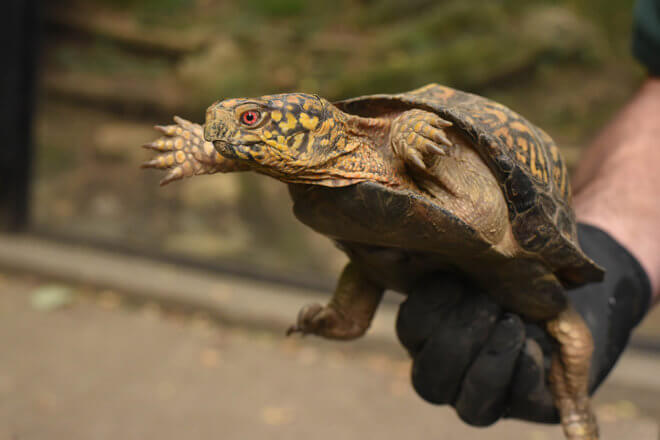Working to Protect Maryland’s Wildlife
The Maryland Zoo is dedicated to caring for, learning from, and protecting the wildlife in our own backyard. As part of this commitment, the Zoo maintains a strong working relationship with the Maryland Department of Natural Resources (DNR). Other important partners include Project SNOWstorm and Tri-State Bird Rescue & Rehabilitation.
Click the sections below to learn about some of these projects.
Since 1999, Maryland DNR has carried out its black bear survey to monitor the health and reproduction of the American black bear population in western Maryland. Each year the Maryland Zoo’s veterinary team works with the DNR colleagues to examine mother bears, or sows, and mark their cubs for future identification. The adult bears have radio collars that allow the DNR to monitor the bears’ movements throughout the year. During the assessment, the team also collects blood and other health samples from the bears. Back at the Zoo hospital’s laboratory, Zoo staff examine the samples to assess the health of the bears.
Much of conservation involves finding ways for humans to coexist with wildlife. The information gathered from the black bear surveys contributes to this broader goal. The surveys give DNR and Zoo staff an overall picture of the size and health of the state’s bear population and an understanding of potential risks of disease to the bears, and to the people, their pets, and other wildlife that live alongside black bears in Maryland.
Since 1996, the Zoo has been studying the Eastern box turtles that live in Druid Hill Park. When a box turtle is found on Zoo grounds, a member of the Zoo’s Conservation and Veterinary Departments collect the turtle’s body measurements, take blood samples, and if the turtle is female, x-ray her to check for eggs. The team also places a microchip under the turtle’s skin so they can identify the individuals if they find them again. A few of these turtles also receive radio transmitters so that Zoo staff and volunteers can monitor their movements over time. This kind of data can help us understand more about how far individual box turtles range and how they use their habitat. Most recently, the eastern box turtle project has added a focus on the movements and nesting habits of female turtles in both developed (exhibit and buildings) and undeveloped (forested) parts of the Zoo. Staff and volunteers, including a group of specially trained teen volunteers, have used techniques such as transect surveys and radio tracking as part of this effort.
Learn more about Eastern Box Turtles
The native range of the tiny bog turtle spans from New York State to Georgia, with regionally significant bog turtle populations found in Maryland. Yet since 1980, bog turtle populations in Maryland have decreased by more than 50%. As wetlands are drained for commercial and agricultural development, habitat for this species and many others is lost. Poaching of these turtles for the pet trade also has contributed to decreasing numbers. Today, bog turtles are a critically endangered species.
In partnership with Maryland DNR, the Maryland Zoo sends staff into the field to assist with DNR’s annual monitoring of remaining bog turtle sites in the state. Zoo veterinary and animal care staff are also collaborating with DNR colleagues on a bog turtle health and genetic study to learn more about the risks that individuals of this species face in Maryland.
In 2018, five wood turtles were part of a large group of illegally collected reptiles confiscated in upstate New York. Genetic testing was able to identify the turtles’ origin as a watershed in Maryland. Ideally, these five turtles would have been returned to their native environment, but the conditions in which they were illegally held likely exposed them to diseases or parasites that could threaten other wildlife upon release. Instead, authorities found a home for the turtles at the Maryland Zoo.
Prized by poachers and facing multiple human-caused threats from habitat loss to vehicle collisions, wood turtles are listed by IUCN as an endangered species. Due to their declining numbers in Maryland, the Maryland Zoo and Maryland DNR recently began a headstarting program in which the four surviving rescued turtles would be the “genetic founders.” In a headstarting program, young individuals are raised under special conditions to prepare them for release to the natural habitat. At the Zoo, the wood turtle “founders” will have the opportunity to breed, and any offspring will be raised in conditions at the Zoo hospital that limit exposure to disease. When offspring reach a size large enough to avoid most predators–and to carry a transmitter for continued monitoring–they will be released within an appropriate habitat.
In 2022, the first “headstarted” juvenile was released in Western Maryland. In 2023, six hatchlings were released from those same founders and are being tracked via telemetry in a cooperative program by Maryland Zoo, Susquehannock Wildlife Society, and Maryland DNR to evaluate survival and health of the hatchlings in order to determine the success of the program.
Created in 2014, Project SNOWstorm is a collaboration of scientists and organizations, including the Maryland Zoo, interested in the ecology and health of snowy owls. From the beginning, this group has carried out large-scale studies on where snowy owls move throughout the year, and how they use different habitats. To track the owls’ migration routes and hunting patterns, researchers outfit snowy owls with GPS transmitters. As a Project SNOWstorm partner, the Maryland Zoo collects blood samples from snowy owls that find their way into Maryland during winter, and has also rehabilitated several snowy owls that were found injured in Maryland.
In addition to collecting samples, the Zoo plays a role as the “biobank” for all samples collected for Project SNOWstorm across the United States. Staff at the Zoo’s veterinary hospital test each sample to assess the owls’ basic health and then send samples on to laboratories of other Project SNOWstorm collaborators. There, the samples are examined for exposure to infectious diseases and environmental toxins such as pesticides and heavy metals like lead and zinc. Together, these data sets will allow researchers and conservationists to better understand the general health of snowy owls that migrate south in the winter and to identify human-caused health issues in snowy owls and make informed decisions to protect this species.
As the only zoo project partner with a resident snowy owl, the Maryland Zoo was able to make a unique contribution: pilot testing new transmitter technology. When the team was ready to make improvements to the original transmitter design, they wanted to “test drive” a prototype before deploying the new version. The Zoo’s snowy owl wore the backpack transmitter for a number of months to see how the new design fared. The owl appeared unbothered by this new accessory, giving the Project SNOWstorm team the confidence needed to deploy the revamped device.
The Zoo has a longstanding relationship with Tri-State Bird Rescue & Research, an organization that rehabilitates injured and orphaned native birds and responds to oiling emergencies that affect wildlife. As part of the Tri-State’s mid-Atlantic network of wildlife responders, the Zoo sends specially trained staff to sites where birds and other wildlife have become oiled to help triage, stabilize, clean, and care for the animals.
The Zoo also regularly treats an array of injured wildlife found in Druid Hill Park and downtown Baltimore. In 2018, the Maryland Zoo’s rehabilitation efforts gained international recognition after an Eastern box turtle sustained a severe injury–a fractured plastron (bottom shell)–for which the Zoo’s hospital team devised a creative solution: After surgery, the team built a customized LEGO® wheelchair to allow the turtle to walk during his recovery. Lifting the turtle’s shell off the ground allowed it to heal and let the patient continue to build his strength. The turtle was successfully released back into Druid Hill Park once the shell had fully healed.
What should you do if you find injured wildlife?
Although the Zoo works with professional partners on specific wildlife rehabilitation cases, we are not able to accept injured wildlife from the general public. A list of wildlife rehabilitators is available on the website of Maryland’s Department of Natural Resources.
